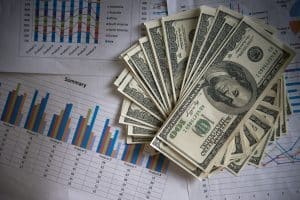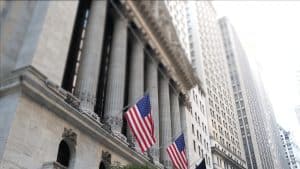Federal Reserve interest rate at 4.25%: what it means for you

Anúncios

When the Federal Reserve interest rate sits at 4.25%, it doesn’t just impact Wall Street, it reaches your wallet, your credit card, and even your future plans.
Whether you’re saving for a home, paying off student loans, or building your emergency fund, the decisions made by the Fed ripple across every corner of the economy.
Anúncios
Understanding what this rate means, why it was set, and how it can influence your personal finances is key to making smart decisions in today’s economy.
Understanding the Federal Reserve and Its Role in Shaping the U.S. Economy
The Federal Reserve interest rate is more than a policy lever. It reflects decisions made by the Federal Reserve, the central institution responsible for steering the American economy.
To understand how this rate influences everything from credit cards to inflation, we must first explore the fundamental role of the Fed.
Anúncios
What Is the Federal Reserve and Why It Exists
Established in 1913, the Federal Reserve was created to ensure financial stability after repeated banking crises.
Its core mission is defined by three goals: maintaining stable prices, fostering maximum employment, and promoting moderate long-term interest rates. These objectives guide all its decisions, including the setting of the Federal Reserve interest rate.
The Fed acts independently from political influence, yet it remains accountable to Congress and the public.
It regularly publishes economic projections, policy statements, and minutes from its Federal Open Market Committee (FOMC) meetings to maintain transparency.
Main Tools of the Federal Reserve
The Federal Reserve uses several key tools to influence economic conditions and ensure financial balance. Among these, the Federal Reserve interest rate plays the most visible and influential role. However, it operates alongside other mechanisms:
- Open market operations: Buying or selling U.S. Treasury securities to manage liquidity in the banking system
- Discount rate: The interest charged to banks for borrowing directly from the Fed
- Reserve requirements: The minimum amount of capital banks must hold in reserve, limiting or expanding lending ability
By adjusting these tools, especially the benchmark interest rate, the Fed can either tighten or loosen the supply of money across the economy.
How the Federal Reserve Interest Rate Impacts Financial Life
A change in the Federal Reserve interest rate affects a wide spectrum of financial products. When rates rise, borrowing becomes more expensive, discouraging large purchases and investments.
Mortgages, personal loans, and credit card balances all become costlier. This is designed to reduce consumer demand and help control inflation.
When rates are reduced, borrowing becomes more attractive. Consumers are more likely to take out loans, buy homes, or invest in businesses. This stimulates economic activity and can help avoid or recover from recessions.
The decision in June 2025 to keep the Federal Reserve interest rate at 4.25 percent illustrates the Fed’s careful balancing act.
Although inflation has shown signs of cooling, the Fed remains cautious, aiming to observe sustained progress before making any further rate cuts.
Stabilizing the Economy During Uncertainty
In periods of financial instability, the Federal Reserve acts as a safeguard.
It can respond quickly to crisis scenarios by lowering the Federal Reserve interest rate, offering emergency funding to banks, or ensuring that credit continues to flow throughout the system.
This was evident during the pandemic, when the Fed cut rates sharply and implemented asset purchase programs to protect the financial system. The Fed’s capacity to act decisively in turbulent moments is a cornerstone of its credibility.
Why This Matters for Everyone
The actions of the Federal Reserve are not abstract or distant. Every rate decision influences consumer behavior, business planning, and economic performance.
Whether you are saving for the future, managing debt, or investing, the Federal Reserve interest rate touches nearly every aspect of your financial life.
Understanding how the Fed works allows you to make informed choices and adapt to economic shifts with confidence. It turns financial news headlines into actionable insight.
How the Federal Reserve Interest Rate Shapes Economic Behavior and Growth
The Federal Reserve interest rate serves as a core mechanism for steering the U.S. economy. Every time it changes, the ripple effects reach households, businesses, and markets.
This rate is not merely a technical metric. It actively guides consumer confidence, investment trends, and national growth patterns.
The Function of Interest Rates in Economic Cycles
Interest rates define the cost of borrowing money and the reward for saving it. When the Federal Reserve interest rate is low, individuals and companies are more likely to borrow.
Loans for homes, cars, and business investments become more accessible, which often stimulates economic expansion.
Conversely, when the rate is high, borrowing costs rise. This discourages excessive spending and slows down investment. These shifts are intentional.
They are designed to either cool off inflation or encourage growth during downturns, depending on the broader economic context.
How a Rate Increase Impacts the Economy
An increase in the Federal Reserve interest rate has a series of direct and indirect effects:
- Higher loan and mortgage costs: Consumers face more expensive credit, leading to reduced demand for homes, vehicles, and major purchases
- Reduced business borrowing: Companies may delay or cancel expansion plans, affecting employment and innovation
- Decline in stock market activity: Investors may shift capital from equities to interest-bearing assets
- Strengthening of the dollar: A higher interest rate can attract foreign investment, increasing the value of the U.S. dollar and affecting exports
These outcomes work together to temper inflation but can also slow economic momentum if applied too aggressively or for too long.
The Ripple Effects of Rate Changes
Changes in interest rates have a ripple effect throughout the economy. For example, when the Fed raises rates, banks typically increase rates for loans and mortgages.
This increase makes it more expensive for individuals and businesses to borrow, which can lead to lower spending.
On the flip side, higher interest rates can benefit savers. With increased rates, savings accounts often yield higher returns, encouraging people to save rather than spend.
However, if consumers save too much and spend too little, it can also slow economic growth.
The Fed’s Role in Balancing Growth and Stability
As shown in the June 2025 policy statement, the Federal Reserve continues to monitor the economy for signs of sustained inflation or potential slowdowns.
Holding the Federal Reserve interest rate at 4.25 percent signals a desire to maintain balance, restraining prices without suppressing growth entirely.
This cautious strategy highlights the delicate role the Fed plays: promoting expansion while guarding against overheating.
Its interest rate decisions are not taken lightly, as they can define the pace and direction of the economy for months or even years.
Understanding the Broader Impact
Interest rates influence not just loans and savings, but also employment, wages, and investment trends. Businesses make staffing and production decisions based on projected costs of capital.
Consumers adjust their budgets in response to loan affordability and returns on savings.
By paying attention to the Federal Reserve interest rate, you can better anticipate changes in market behavior, plan major financial moves, and respond proactively to economic developments.
The Federal Reserve Interest Rate and Its Impact on Consumer Borrowing

Changes in the Federal Reserve interest rate directly affect how much consumers pay to borrow money. From credit cards and car loans to home mortgages, interest rates play a central role in shaping financial decisions and household spending habits.
When the rate rises or falls, the cost of borrowing adjusts accordingly, which can influence broader economic activity.
Why Borrowing Grows When Interest Rates Are Low
When the Federal Reserve interest rate is low, borrowing becomes significantly more affordable. Consumers can access loans at reduced interest costs, making it easier to finance major life purchases like homes and vehicles.
Mortgage rates typically decline in this environment, encouraging first-time buyers and refinancing. Auto loans also become more attractive, supporting strong sales in the car market.
This increased access to credit stimulates consumer demand, which in turn drives growth across multiple sectors.
As people borrow to spend on homes, appliances, renovations, or vehicles, businesses benefit from rising sales and stronger revenue cycles. These effects contribute to job creation, higher production, and improved confidence in the economy.
How High Interest Rates Reshape Consumer Behavior
In contrast, when the Federal Reserve interest rate rises, so do lending costs. Monthly payments for variable-rate credit cards and adjustable-rate mortgages increase, making debt more expensive to manage.
This often results in fewer loan applications, a slowdown in home purchases, and a general reduction in high-cost spending.
Borrowers may reconsider or postpone financial decisions due to affordability concerns. For example, someone planning to buy a new car might delay their purchase or choose a less expensive model to stay within budget.
Similarly, families looking to move or upgrade their homes may find that higher mortgage rates reduce what they can afford to borrow.
This caution affects retailers, service providers, and industries tied to consumer credit, as lower borrowing typically means reduced demand.
Businesses may respond by adjusting inventory, limiting investments, or slowing hiring plans in response to weakened consumption.
The Pressure on Existing Borrowers
A rising Federal Reserve interest rate not only affects new borrowers but also puts pressure on those with existing debt. People with variable-rate loans may see their monthly payments climb unexpectedly.
As more income goes toward interest, less remains for discretionary spending, savings, or investment. Over time, this can tighten household budgets and reduce financial resilience.
Consumers managing high-interest credit card balances or lines of credit are especially vulnerable. Without action, such as refinancing or accelerating payments, they may experience growing financial stress.
Monitoring loan terms and adjusting repayment strategies becomes essential in these periods.
Adapting to Rate Changes
Understanding the influence of the Federal Reserve interest rate empowers individuals to make smarter borrowing decisions. In a low-rate environment, fixed-rate loans can lock in affordable terms for years.
In contrast, during high-rate cycles, reducing debt exposure and exploring options to refinance or consolidate loans may offer better long-term financial stability.
By staying informed and proactive, consumers can navigate interest rate fluctuations with greater confidence and minimize the negative impact on their financial goals.
Savings accounts: what to expect
Savings accounts are a vital part of personal finance. When interest rates change, you can expect fluctuations in the returns on your savings.
A savings account is a safe place to store your money while earning interest, but the rate you receive depends significantly on current economic conditions.
Impact of Interest Rates on Savings Accounts
When the Federal Reserve raises interest rates, many banks follow suit by offering higher rates on savings accounts. This change means that consumers can earn more on their savings over time. It encourages people to save more, knowing their money will grow at a faster rate.
- Higher interest rates lead to greater returns on savings.
- Increased competition among banks to attract depositors.
- Consumers may be more motivated to save.
- Long-term savings become more appealing.
Conversely, when rates are low, the returns on savings accounts diminish. This situation can be frustrating for savers as their money earns little to no interest. It might lead some individuals to seek alternative investments, even if they are riskier.
Choosing the Right Savings Account
It’s essential to compare different savings accounts to find the best option that meets your needs. Look for accounts with the highest interest rates, low fees, and convenient access to your funds.
Online banks often offer higher rates than traditional banks due to lower overhead costs.
By keeping funds in a high-yield savings account, you can maximize your savings potential. As interest rates fluctuate, stay informed about the best available options to ensure your savings are working hard for you.
Current trends in interest rates
Tracking the Federal Reserve interest rate has become essential for anyone looking to understand where the U.S. economy may be headed.
In 2025, the Fed’s strategy reflects a shift from aggressive rate hikes to a more cautious, data-driven pause. This signals a transition in monetary policy as inflation begins to moderate but remains above the long-term target.
A Pause After Persistent Tightening
After a series of rate increases in 2022 and 2023 aimed at controlling inflation, the Federal Reserve has maintained the Federal Reserve interest rate at 4.25 percent throughout the first half of 2025.
In its June statement, the Fed emphasized the need to observe further progress in inflation before considering any reductions.
This steady rate marks the seventh consecutive meeting without a change, reflecting the Fed’s desire to hold firm while closely monitoring key indicators like consumer spending, labor market strength, and wage pressures.
Why the Rate Remains Elevated
The decision to keep the Federal Reserve interest rate unchanged stems from mixed signals in the broader economy. While inflation has cooled significantly from its peak, it has not yet reached the Fed’s 2 percent target.
Core services inflation remains sticky, particularly in housing and healthcare sectors.
At the same time, the job market remains relatively strong, with unemployment low and wage growth steady. These dynamics suggest that the economy can tolerate higher rates a bit longer without stalling, giving the Fed room to avoid premature easing.
Impact on Market Expectations
Financial markets have responded to the Fed’s position with measured anticipation. Many analysts now expect rate cuts to begin gradually, possibly in late 2025, depending on inflation trends and economic momentum.
However, the Federal Open Market Committee (FOMC) has made it clear that any adjustments will depend on hard evidence that inflation is sustainably declining.
This forward guidance has tempered speculation and encouraged both consumers and investors to prepare for a longer period of elevated rates.
What This Means for Households and Businesses
For households, the current Federal Reserve interest rate means that borrowing costs will likely remain high in the short term. Mortgages, personal loans, and credit card interest rates are not expected to ease significantly until the Fed shifts course.
On the other hand, savers may continue to benefit from competitive interest on deposits and fixed-income products.
For businesses, the cost of capital remains a challenge. While many firms have adapted to the higher rate environment, future expansion plans may be delayed unless financing conditions improve.
Companies in interest-sensitive sectors like construction, real estate, and consumer goods are particularly exposed.
According to recent data, the Fed is carefully evaluating inflation trends, with expectations hovering around 2.3% for the medium term.
This figure plays a key role in the Fed’s current strategy of holding rates steady until more conclusive progress is seen toward its 2% inflation target.
Navigating the Current Landscape
Understanding the direction of the Federal Reserve interest rate can help both consumers and business owners make more informed decisions.
While no immediate rate cuts are on the horizon, the Fed’s cautious stance suggests that stability is the current goal. For now, it’s about maintaining control over inflation without reversing the gains made in employment and economic output.
Remaining alert to upcoming FOMC meetings and updated economic data is key to anticipating the next phase in interest rate policy. As 2025 progresses, the Fed’s actions will continue to shape the financial climate in real time.
Smart Financial Strategies for Managing the High Federal Reserve Interest Rate

Living in a high Federal Reserve interest rate environment requires a shift in how you plan, spend, borrow, and save.
As borrowing costs rise and interest on debt becomes more expensive, households and businesses alike must adapt their financial habits to protect long-term stability and avoid unnecessary losses.
Review and Restructure Existing Debt
One of the first steps in managing finances when interest rates are elevated is reviewing your current debt.
Loans with variable interest rates, such as certain mortgages, lines of credit, or student loans, can become significantly more expensive as the Federal Reserve interest rate remains high.
If possible, refinancing into fixed-rate alternatives can help lock in predictable payments and avoid future rate increases. Consolidating credit card debt into a fixed-rate personal loan may also reduce interest burdens and improve financial clarity.
Paying down high-interest balances aggressively should be a priority. In a high-rate period, every dollar of interest saved translates into better cash flow and more financial flexibility.
Adjust Spending and Budgeting Habits
Rising rates can put pressure on household budgets. Monthly payments for credit cards, auto loans, and mortgages often climb alongside the Federal Reserve interest rate, leaving less room for discretionary spending.
It’s crucial to revisit your budget and identify areas where expenses can be trimmed or delayed.
This might mean postponing major purchases, limiting travel or luxury spending, or cutting subscription services. Focusing on essential needs over wants can help you maintain control of your finances until rates begin to ease.
Also, consider prioritizing savings for emergencies. A strong financial cushion becomes even more important when borrowing is expensive and income stability is uncertain.
Take Advantage of Improved Savings Yields
One advantage of a high Federal Reserve interest rate is the potential for better returns on savings.
Many banks and credit unions offer higher yields on products like high-yield savings accounts, certificates of deposit (CDs), and money market accounts.
Instead of leaving excess funds in a checking account, move them into interest-bearing options that capitalize on elevated rates. Comparing offers from online banks or fintech platforms may lead to significantly better returns than traditional institutions.
This is also a good time to revisit your short- and medium-term goals. If you’re saving for a major expense, a fixed-rate CD may provide a secure way to grow your funds without market volatility.
Rethink Investment Decisions
In a high-rate environment, stock markets often experience volatility. Investors may shift toward bonds, dividend-paying stocks, or real estate alternatives that offer more predictable returns or stability.
However, high borrowing costs can also weigh on certain sectors, so diversification is key.
Before making large investment decisions, consider how future changes in the Federal Reserve interest rate could affect your returns.
A balanced portfolio that reflects both current conditions and long-term goals is essential for navigating this environment wisely.
Stay Informed and Flexible
Above all, staying informed about the Federal Reserve’s plans and upcoming policy changes is critical.
With the Federal Reserve interest rate holding at 4.25 percent and inflation not yet fully under control, it’s likely that elevated rates will persist for the near future.
By keeping track of Federal Open Market Committee (FOMC) statements, inflation data, and employment trends, you can better anticipate market changes and adjust your financial strategy accordingly.
Flexibility and awareness are powerful tools during periods of economic uncertainty.
Conclusion: Why Staying Informed Matters
In today’s complex economic environment, understanding the Federal Reserve interest rate is no longer optional, it’s essential.
Whether you’re refinancing your home, building a savings buffer, or simply trying to keep monthly expenses under control, knowing how Fed policy works helps you make smarter decisions.
The Fed’s latest statement released on June 18, 2025 confirmed its commitment to holding the rate at 4.25%, awaiting more consistent signs of inflation decline.
This aligns with recent reporting from AA News, which notes that policymakers are adopting a cautious approach to ensure economic stability.
Whether you’re a borrower, saver, or investor, the Federal Reserve interest rate affects you. Staying up to date and adjusting your financial habits accordingly can make all the difference in how you weather economic changes in the months ahead.
FAQ – Frequently Asked Questions about Federal Reserve Interest Rates
How do interest rates affect my loan payments?
When interest rates rise, your loan payments may increase if you have a variable-rate loan. Conversely, lower rates can lead to smaller payments.
What strategies can I use to save money when rates are high?
Look for high-yield savings accounts and try to pay off high-interest debt quickly to minimize your costs during high-rate periods.
Should I refinance my loans during a period of rising interest rates?
It can be beneficial to refinance when rates are low. However, if rates are rising, consider locking in a fixed rate to avoid higher future payments.
How often do the Federal Reserve interest rates change?
The Federal Reserve reviews interest rates regularly, often during scheduled meetings, making adjustments based on economic conditions and inflation.
Liked the article?





